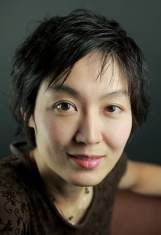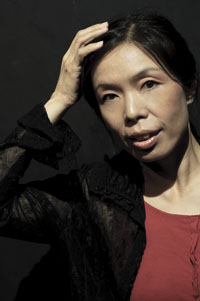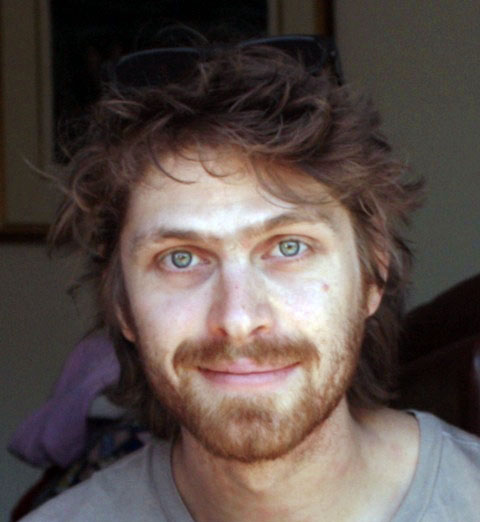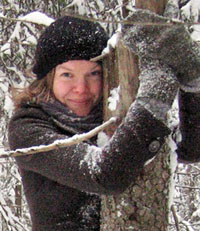| contact festival
kuala lumpur July 26-31, 2011 |
|
|
teachers + class descriptions
|
Shoko Kashima is a dancer, improviser, photographer and teacher based in Tokyo. She received her Master of Arts in dance education from Ochanomizu University in Tokyo. In 2002, she went to New York to study dance for one year, with a scholarship from the Japanese Government Overseas Study Program for Artists. Shoko founded her own dance company "ZINZOLIN" in 1996, and started Duo unit with Ryoko Sugimoto in 2000. Their piece was selected by Joyce SOHO Presents, DUMBO Festival, The Brooklyn Museum of Art and The Cool NY 2004 Dance Festival in NY. After returning to Japan, Shoko started to work with Chico Katsube as a member of C.I.co. and CIFJ. She is also known as a photographer, and has a good feel for taking dance pictures. |
||||
|
Chico Katsube is a dance improviser,
choreographer and a teacher from Osaka, Japan. She received her B.Ed.
and M.A. degrees from the Dance Education Division of Ochanomizu
University in Tokyo, where she studied Modern Dance and Choreography.
From 1990 to 94, she studied and danced in New York City as a company
member with choreographers such as Joy Kellman and Ruby
Shang. Chico began her foray into contact improvisation under the influence of Nancy Stark Smith who visited Japan and taught her workshops in 1997 at the “Triangle Project” program. In 2000, she founded C.I.co. with Makiko Ito. Since then, she has been a leading figure in teaching, organizing and performing contact improvisation in Tokyo and throughout Japan. She now creates and studies dance improvisation together with Shoko Kashima to explore and integrate Asian culture into their improvisation. Ma (間) in CI, and its possibility "Ma" is the
very meaningful Japanese word for the “space” between things in space
and in time. By using the sense of ma
in contact improvisation, we will find our dance to be more mysterious
and exciting. We will play
with the “space”
between partners and people in the group, then we think about the
psychological changes caused by the physical changes or shifting
situations.
Ma is the place to feel, Ma is the place to listen, Ma is the place to begin, Ma is the place to suspend, Ma is the place to decide, Ma is the place to dance, Ma is the place to contact. |
||||
|
A well-known dance teacher, choreographer and dancer, Ming-Shen Ku's works are influenced by a variety of Western and Eastern dance styles. In 1991, she became deeply involved in contact improvisation and subsequently introduced it to Taiwan. Since then, she has developed her own movement emphasis in teaching modern dance and improvisation. As
an active choreographer, Ku has collaborated with various dance
companies in Taiwan, Hong Kong, and the US. Her solo
performances have also been invited to tour the US, London, Paris,
Australia, Tokyo, and Hong Kong. In 1993, she founded “Ku &
Dancers” to present new
work and to promote the concept of improvisation. As
the only professional dance company in Taiwan that devotes
itself to improvisation, “Ku & Dancers” has since
set its foot in New York, Australia, Paris, China, Korea, and
Indonesia.
Ku
has also been invited as a guest artist to perform and to teach in
universities and dance companies around the world. She is currently an
associate professor at the Taipei National
University of the Arts. Ming-Shen Ku’s participation in the Contact Festival Kuala Lumpur 2011 is supported by the ANA - Arts Network Asia (www.artsnetworkasia.org) an enabling grant body, working across borders in multiple disciplines, that encourages collaboration initiated and implemented in Asia by Asian artists and engaging with Asian arts communities."
The classes are designed with Contact Improvisation as a
base and are highly influenced by somatic studies. Participants will explore
micro movements inside the body, and then reflect them in partnering work. The
goal is to use the information as spontaneous knowledge to meet the rapid
exchange of energy and force between partners. Fundamental techniques such as total awareness, physical listening, movement leading and following, and sense of center weight will be covered step by step in three days of classes. Some partnering patterns will be used as tools to experience certain topics. Finally a free dance will be incorporated into the class design.
|
||||
| |
|
|
Joey Lehrer has been dancing most of his life. His explorations in contact improvisation have traveled him widely in Australia, New Zealand and beyond – dancing with State of Flux, Martin Hughes, Ray Chung, Joerg Hassmann, Gustavo Lecce. Joey is a key contributor to the CI community in Australia as an organizer of the Australian Contact Improvisation Convergence and co-editor of <proximity> magazine. As a respected teacher, writer and performer of the CI form, Joey draws on his other bodywork practices: Structural Integration, manual therapy and Pilates.
Something that
has interested me for a long time in CI is spectrums. Three significant
ones, which overlap in many varied ways, for me at the moment are: |
|
|
|
|
Ulla Mäkinen is a dancer and dance teacher who has been practicing contact improvisation for ten years. She lives in Finland but travels a lot working in contemporary dance. She loves to teach movement and research information from different somatic fields as well as dance as a performing art. In her work she emphasizes gentle discipline and curiosity, and diving into the unknown. She also works with teaching Pilates and Yoga, and co-directing the artist’s platform BIDE (Barcelona International Dance Exchange) www.bide.be. Read more about her in www.ullamakinen.com.
What supports us? What kind of support systems we need to be able to move, to dance, to meet, to go on? In
this class we explore contact improvisation from the aspect of support
and release, we dive into the anatomical world to find structure and
strength and ability to let go. As well we will research other, such as
spatial or psychological levels of support, ways to be carried in the
dance. |
||||
|
|
|
|




